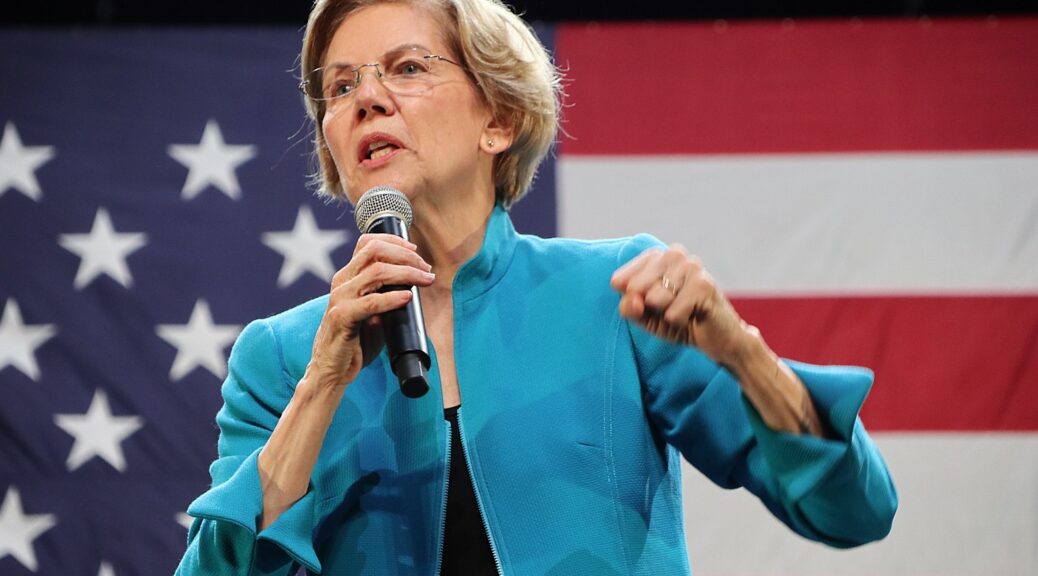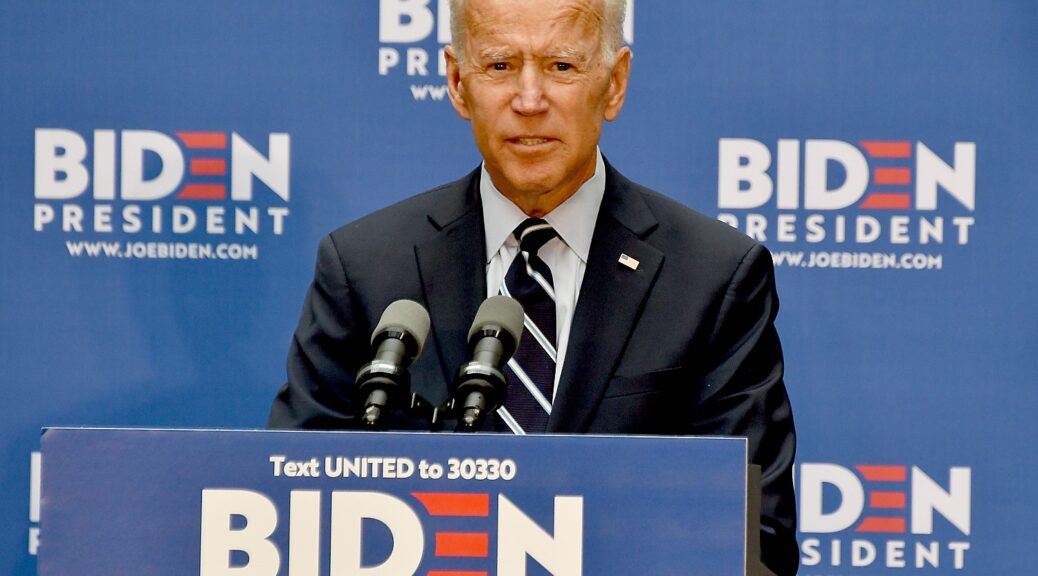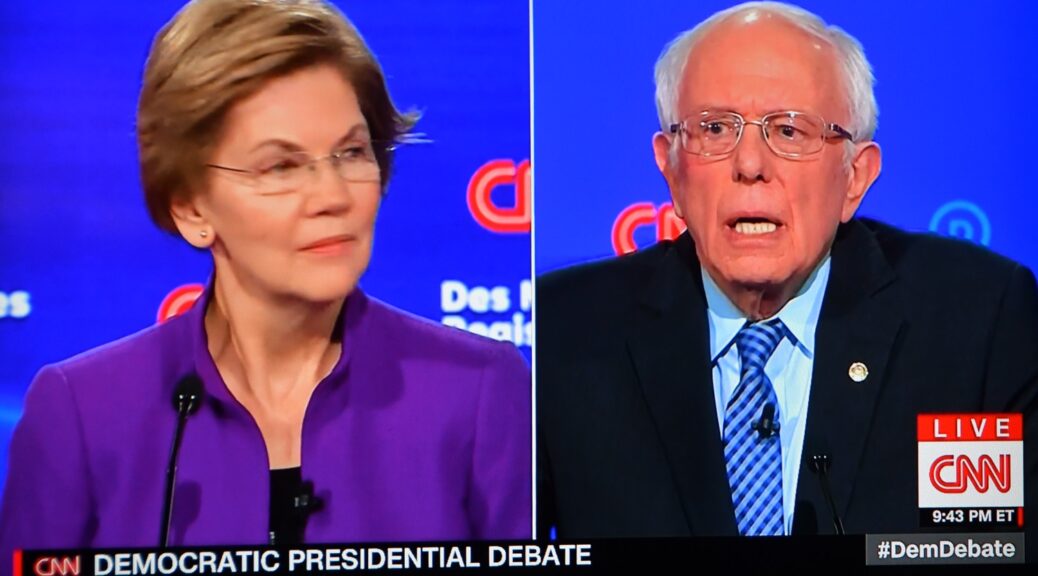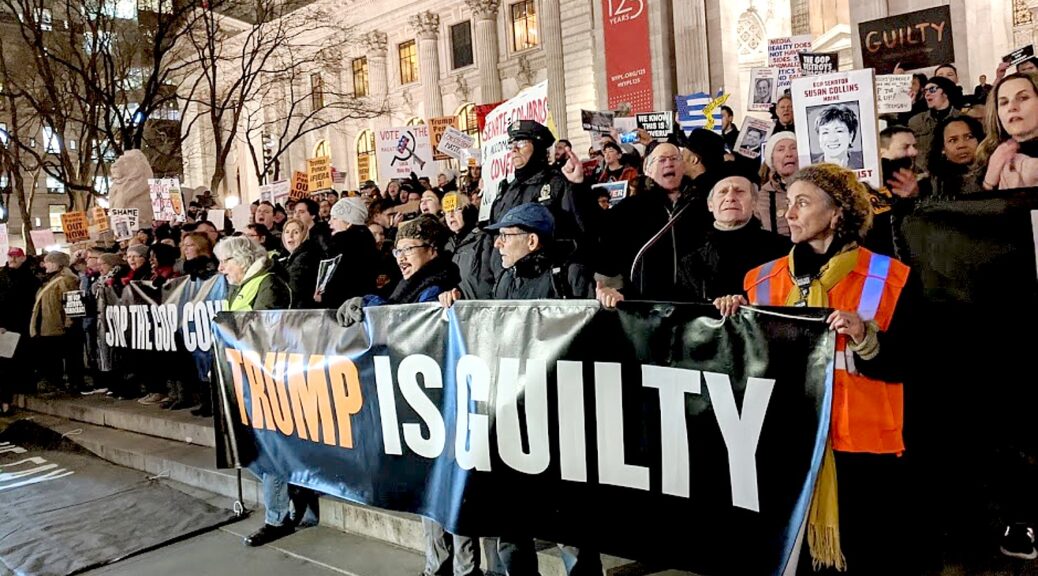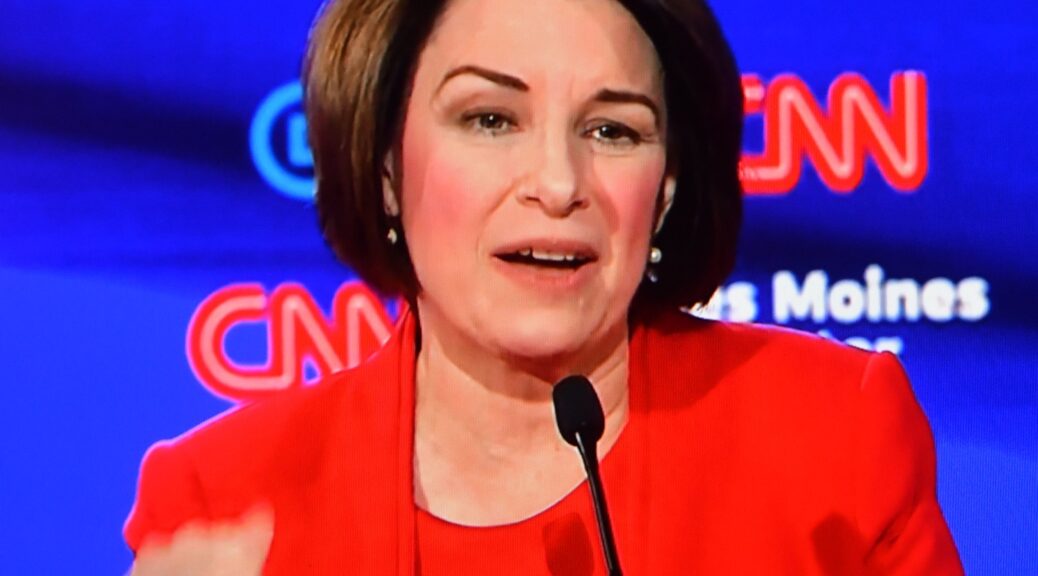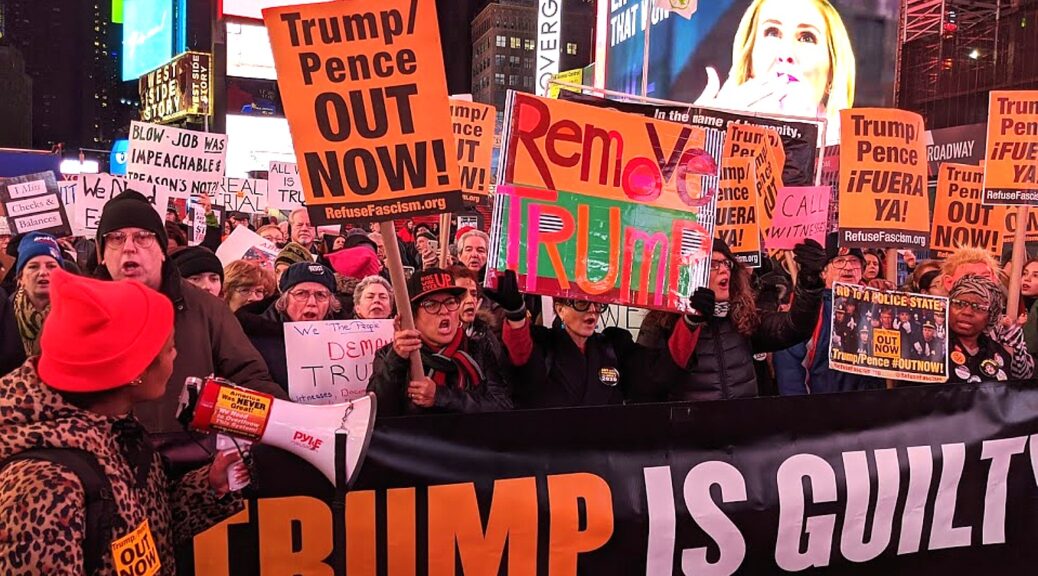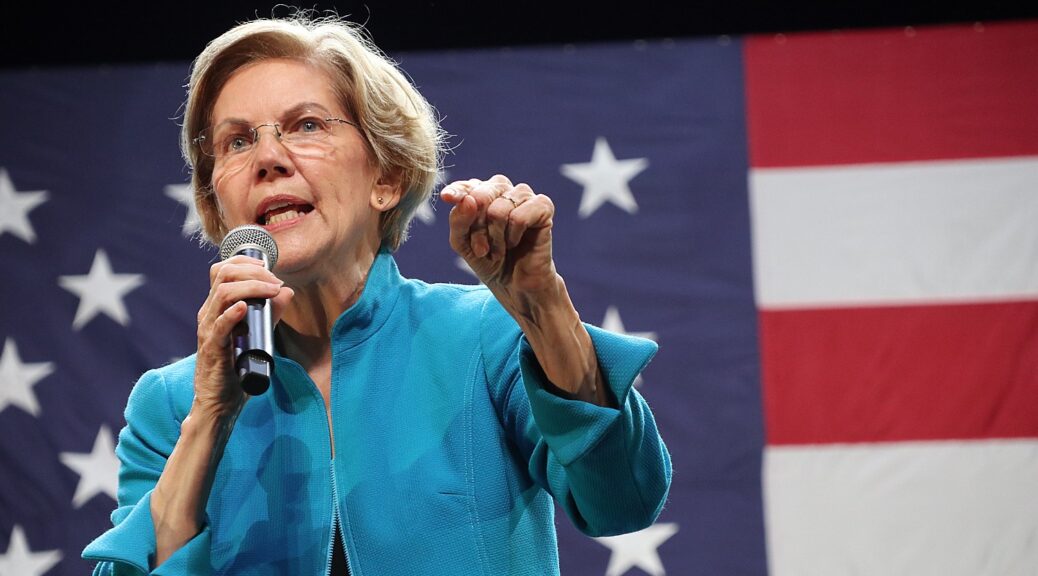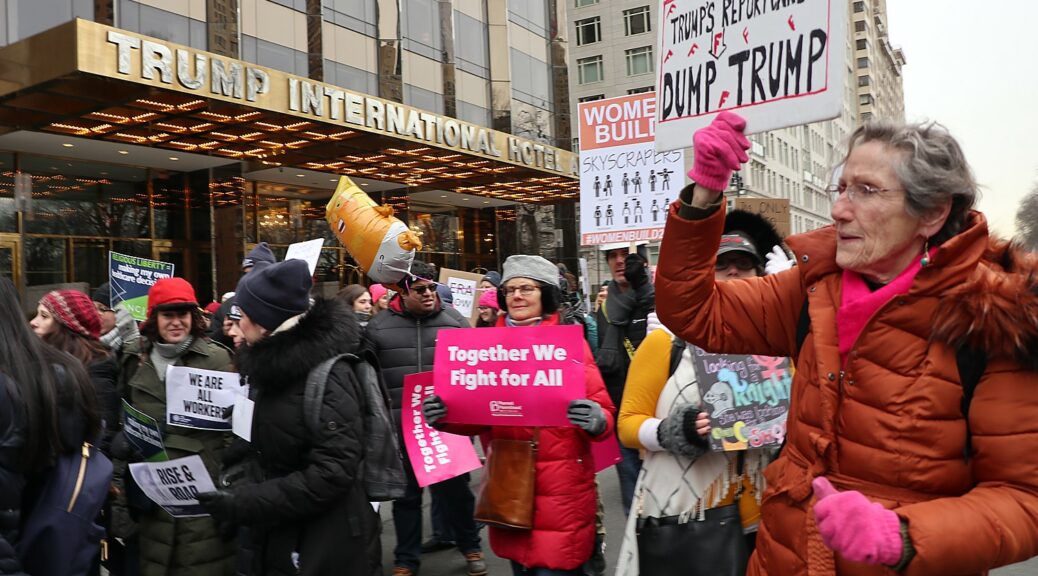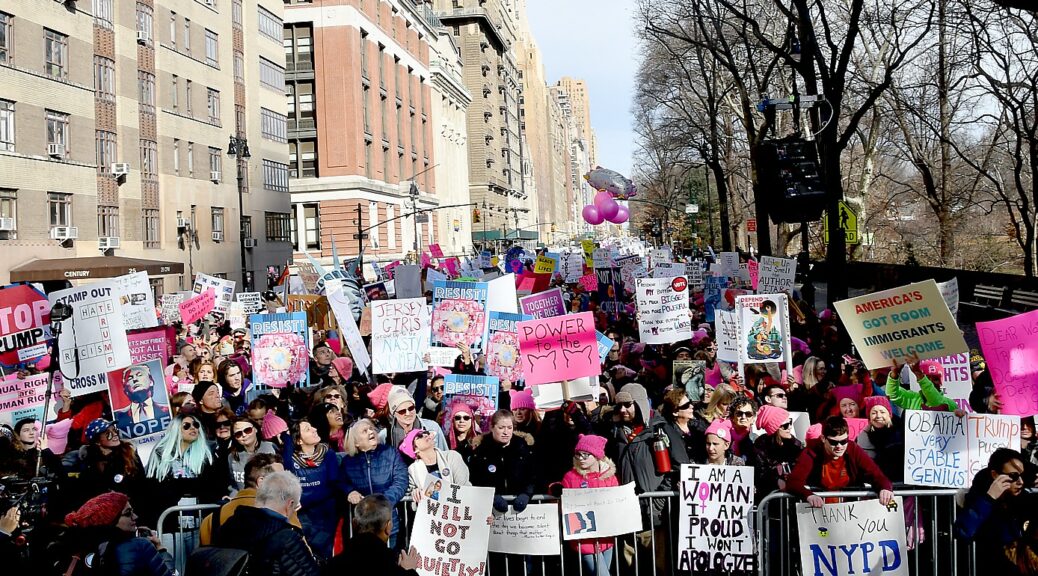
The vigorous contest of Democrats seeking the 2020 presidential nomination has produced excellent policy proposals to address major issues. Senator Elizabeth Warren released her plan to “Restore Integrity and Competence to Government After Donald Trump”
“Donald Trump’s presidency has been a dark period in American history. That period won’t end just because Donald Trump has left office. If we want to write a new chapter in the American story — one in which the government and economy actually work for the people — we will have to cleanse the corruption from our government and urgently act to appoint officials who will bring integrity to public service,” Warren states.
This is from the Warren campaign:
Charlestown, MA – In one year, the next
president will start her first full day of work. Donald Trump will be leaving
behind a disaster: agencies gutted, others run by lobbyists and rife with
corruption and policies that have thrown our country into crisis. The next president
will need to have the energy, expertise, and vision to safeguard our country,
rebuild the government swiftly, and make fundamental changes so that it works
for the American people.
Elizabeth has a plan to restore integrity and competence to government after
Donald Trump. She will:
Address the corruption and incompetence of the Trump Administration by:
Asking for the resignations of all political appointees, including U.S. Attorneys, with an exception only for those positions necessary to preserve continuity and protect national security during the transition period.
Establishing an independent Justice Department Task Force to investigate violations by Trump administration officials of federal bribery laws, insider trading laws, and other anti-corruption and public integrity laws, and give that task force independent authority to pursue any substantiated criminal and civil violations.
Reviewing the performance of independent agencies and removing leading officials for cause where there is justification to do so.
Identifying federal contracting arrangements that arose as a result of corruption in the Trump administration – and ending them.
Swiftly appoint new personnel:
Elizabeth will announce her choices for the Cabinet by December 1, 2020, other top nominations by December 15, 2020, and fully staff all senior and mid-level White House positions by Inauguration Day.
She will not hire any current lobbyists. If someone has served as a corporate lobbyist in the past, they will have a six year cooling off period and there will be no waivers or exceptions. Non-corporate lobbyists will have a two year cooling off period, and any waivers will be made public.
She will also institute a number of rules to make sure that executive branch officials are working on behalf of the people – not themselves or their former employers.
She will use a number of existing tools to swiftly fill government vacancies.
Build a government that reflects the energy and diversity of America:
The Cabinet and senior leadership team will reflect the full diversity of America, including having at least 50% of Cabinet positions filled by women and non binary people.
LGBTQ+ people will be represented across all levels of government, including in leadership roles.
She will diversify recruitment to direct real resources toward attracting entry-level applicants for public service from HBCUs, Tribal Colleges and Universities, Hispanic Serving Institutions, and other minority-serving institutions, and reform high-level recruiting processes to attract diverse experienced hires into senior management positions.
She will create new paid fellowship programs for federal jobs for people from marginalized communities and low-income applicants, including formerly incarcerated individuals.
She will open up promotion pathways by requiring every federal agency to incorporate diversity as part of their core strategic plan and creating support networks through a government-wide mentorship program that centers Black and Brown employees.
And she will recommit to President Obama’s efforts to raise the level of people with disabilities in federal service.
Read more about her plan here and below:
One year from today, the next president will begin her first full day of work.
She will be inheriting a government in crisis: from children in cages at
detention facilities near the border to a reckless foreign policy that
endangers our country and a bigoted ban on travelers from Muslim-majority
countries, our country will be in desperate need of immediate course
correction. Further, Donald Trump will leave behind a government that has been
infected by corruption and incompetence, and his vindictive actions as
president suggest that he is likely to do everything he can to undermine the
next president. We cannot assume that everything will be fine once Donald Trump
leaves office. The next president will need to have the energy, expertise, and
vision to safeguard our country, rebuild the government swiftly, and make
fundamental changes so that it works for the American people.
I know how to get the government working for the people because I’ve done it
before. Back in 2010, President Obama picked me to get the Consumer Financial
Protection Bureau (CFPB) up and running. We recruited a mission-driven staff
and set up the organization, and it took swift action to protect Americans from
financial predators and make financial products safer. From defending people
with crushing levels of student debt to fighting for servicemembers and their
families who were targeted by financial vultures, the agency used every tool in
its toolbox to stand up for ordinary Americans. And that agency has now returned
more than $12 billion directly to people who were cheated.
I have also spent the last seven years in the Senate studying the intimate
details of how our government works, finding the levers that can bring about
big structural change, and identifying the key positions that are responsible
for making these changes. And I have learned from a diverse community of
experts who share my vision for progressive, structural change and who know the
executive branch inside and out.
My agenda would make our government and our economy work for everyone. It
starts with anti-corruption reforms, democracy reforms, campaign finance
reforms — reforms that will break the stranglehold that corporate interests
have on Washington and get our government working for the people. We’ll also
make our economy work for everyone — from cancelling student loan debt to
providing universal child care for every kid age 0 to 5 to investing in green
manufacturing. But achieving this agenda while also addressing the crises that
Donald Trump has created will require an energetic president with expertise on
how the executive branch works, a real commitment to making the executive
branch free from corruption, and the courage to use every tool available to
deliver for working families.
Donald Trump has done serious damage to our government. Of over 700 key
government posts requiring Senate confirmation, the Trump administration
has failed to confirm nearly a third.
At both the Department of Homeland Security and the Department of
Justice, less than half of all key positions
have been filled. The Trump administration has had 28 acting cabinet secretaries over
three years – more than the total number of acting secretaries
in either Bill Clinton or Barack Obama’s eight years in office. Senior career
civil servants have been leaving the Trump administration at a record
pace. Approximately 1 in 5 members of the
Senior Executive Service left the administration in 2017 – a
far greater share than during previous transitions, draining the agencies of
long-held expertise and institutional knowledge.
Of the positions he has filled, Donald Trump has been stacking the government
with lobbyists, campaign donors, and cronies. Halfway through his first
term, he had already hired 281 lobbyists into
political appointments. Shortly after being elected, thirty-eight percent of those he
picked for high-level government jobs were donors and during
his first two years, 40% of his ambassadors came
from outside the foreign service. The mix of industry insiders and donors has
both created turmoil and opened up an opportunity for big businesses to tilt
the rules in their favor. This government run by and for lobbyists has
dismantled workplace safety and environmental rules, health care protections,
and dozens of other programs and regulations that benefit working people.
Rebuilding our government to work for the people won’t just happen. It’s going
to require painstaking work, extraordinary drive and urgency, and a serious
plan to root out the corruption and incompetence that Trump will leave behind.
That means cleaning out the corruption that has infected the government, and it
means moving immediately to fill key jobs and set up agencies with capable
officials committed to putting the public interest first.
Addressing the Corruption and Incompetence of the Trump Administration
On day one of my presidency, I will take aggressive steps to root out the
corruption and incompetence of the Trump administration and to hold that
administration accountable. I will:
Remove all political appointees. Rooting out the
corruption in our government starts with wiping the slate clean on political
appointments. Donald Trump gave influential, high-ranking positions to his
donors, friends, and political allies. I will ask for the resignations of all
political appointees, including U.S. Attorneys, save only those positions
necessary to preserve continuity and protect national security during the
transition period.
Prevent political appointees from burrowing into career
positions. The law outlines clear rules that
help prevent political appointees from circumventing standard hiring practices
and “burrowing” into the government by converting from a political appointment
into a career position. I will strengthen enforcement of rules around
conversion from appointed positions to career civil service to root out
officials who attempt to burrow into agencies.
Establish a Justice Department Task Force to investigate
corruption during the Trump administration and to hold government officials
accountable for illegal activity. Donald Trump has run the most
corrupt administration in history. He was impeached for withholding foreign
aid in an effort to try to benefit his re-election campaign. He
has enriched himself and his business through
the power of his office. And there are public reports of potentially illegal
corruption in every corner of his administration. If we
are to move forward to restore public confidence in government and deter future
wrongdoing, we cannot simply sweep this corruption under the rug in a new
administration. That’s why I will direct the Justice Department to establish a
task force to investigate violations by Trump administration officials of
federal bribery laws, insider trading laws, and other anti-corruption and
public integrity laws, and give that task force independent authority to pursue
any substantiated criminal and civil violations. I have also committed to
establishing a task force to investigate accusations of serious violations by
immigration officials during the Trump era.
Review the performance of independent agencies and remove
leading officials for cause where there is justification to do so. For
good reason, the heads of independent agencies can only be removed for cause —
for example, if they neglect their duties or engage in malfeasance while in
office. My administration will review these agencies and determine whether any
of these agency heads warrant removal for cause — and I will not hesitate to
use my for-cause removal authority if the facts justify it.
Identify federal contracting arrangements that arose as a result of corruption in the Trump administration – and end them. The corruption in the Trump administration extends beyond those who work for the government directly to those who have won contracts to execute government services. For example, Donald Trump repeatedly pushed the Army Corps of Engineers to award a border wall contract to a particular company; the company won the contract despite not meeting the standards for a bid. My administration will review major contracts executed under the Trump administration to identify conflicts of interest and other forms of corruption and take action to cancel any contracts procured as a result of corrupting influences.
Swiftly Appoint New Personnel Who Will Undo the Trump
Administration’s Disastrous Policies, Restore Integrity to Government, and
Fight on Behalf of the American People
It would be foolish to assume that after Trump is gone, the government will
start moving in the right direction all on its own. This will be no ordinary
transition between administrations. One year from now, the next president will
take charge in the middle of multiple crises – from the border, to our foreign
policy, to the undermining of health, safety, and environmental rules, to the
hollowing out and corruption of our public institutions.
My transition will move faster than any transition in modern history to
identify appointees and develop plans for making change starting on day one. Unlike
previous transitions, we will not be able to assume good faith cooperation on
the part of the outgoing administration, and we do not have an outgoing
administration that shares even the most basic values. There will be no time to
lose in putting teams in place to address the crises this administration has
brought on our country – and to take action on the extraordinary challenges
that the American people face.
And that is why I am committing to announcing my choices for the Cabinet by
December 1, 2020, other top nominations by December 15, 2020, and fully staff
all senior and mid-level White House positions by Inauguration Day. Historically,
the Obama administration was the most successful at sending nominations to the
Senate, delivering 35 nominations for confirmation on his first day in office.
As president, I will send the largest package of nominees to the Senate for
confirmation on day one. In addition, I will have the senior and mid-level
ranks of my White House fully staffed on day one, so that we can hit the ground
running.
| Trump | Obama | GW Bush | Clinton | GHW Bush | |
| Day 1 | 28 | 35 | 13 | 25 | 18 |
| Day 100 | 71 | 190 | 85 | 176 | 95 |
| Day 200 | 277 | 433 | 414 | 345 | 315 |
Source: Partnership for
Public Service, Center for Presidential Transition
I have often said that personnel is policy. The
choices of who to appoint are policy choices, because individuals make policy
decisions. But personnel is also performance. If our government doesn’t have
good people, it can’t perform for the American people. To meet this ambitious
schedule while also ensuring that our government reflects the interests of all
Americans, I will focus on three key areas: instituting hiring rules and
practices that end the revolving door and prevent corruption; building an
administration that reflects the experiences and diversity of our country; and
using all available tools to swiftly fill vacancies.
Ending the Revolving Door and Preventing Corruption
We must ensure that the next administration isn’t afflicted by the corrupting
influence of money that plagues Washington. I have introduced the biggest
anti-corruption legislation since Watergate and my first priority as president
is to pass my Anti-Corruption and Public Integrity Act, so that we can clean up
every aspect of Washington policymaking.
But there are many actions a president can take all by herself, and my
administration will adopt the strictest anti-corruption hiring rules of any
administration in American history. And that starts by ending
the revolving door between big corporations and their lobbyists and government
jobs.
My administration will not hire any current lobbyists. If someone has served as a corporate lobbyist in the past, my administration will require them to have a six year cooling off period before they are eligible for a government position, and there will be no waivers or exceptions. Non-corporate lobbyists will have a two year cooling off period, and any waivers will be made public.
My administration will not hire employees of for-profit federal contractors, unless I personally review the situation and decide it is in the national interest. For-profit contractors and licensees do business with the government – they are often awarded huge contracts and licenses for important federal projects. Unless I make a specific exception, my administration will not hire employees of such firms into the agencies or departments that awarded contracts to their former employers for four years after their last contract or license was awarded.
My administration will not hire executives of companies that break federal law or are under investigation unless six years have passed since the conclusion of the investigation or enforcement action. People in the private sector can have valuable experience to bring to public service. But too often, government agencies hire senior executives at companies and banks that have broken federal law, are subject to enforcement actions, or are under investigation. Leaders of companies and banks that don’t follow the law should not be in a position of public trust developing and enforcing the law. These appointments stop in my administration.
My administration will not hire any person who receives a “golden parachute” from their employer. “Golden parachutes” – payments, bonuses, salaries, or other forms of compensation contingent on accepting a position in the federal government – create the impression that the recipients will work in their former employers’ best interest – not the public’s. A Warren administration will not allow such arrangements.
In addition to these hiring restrictions, my administration will institute rules to make sure that executive branch officials are working on behalf of the people – not themselves or their former employers:
To prevent conflicts of interest, officials in my administration will have to divest from any individual stock, bond, or other investment that federal ethics officials determine may be directly influenced by the actions of the employee’s agency.
Senior officials in my administration will be required to divest from all complex investments – including individual stocks and bonds, as well as commercial real estate and privately-owned or closely-held businesses.
Senior officials must also commit to divesting any interests in family trusts if ethics officials determine that an asset belonging to the trust might pose a conflict of interest.
Further, executive branch officials who have not been Senate
confirmed must recuse themselves from matters affecting their former employer,
direct competitor, client, or organization that an employee belonged to in the
last four years. Senior officials will be prohibited from being employed
by or consulting for the private sector while simultaneously working in the federal
government. And anyone who volunteers for the federal government, including
White House staff and advisors, will have to agree to abide by all federal
ethics rules too.
The revolving door goes both ways, and too often, people in government depart
and take jobs working at the very firms they had been regulating. At best, this
creates the appearance of corruption. At worst, individuals who are thinking
about their next job corrupt the policymaking process to favor potential
employers. We will end this kind of revolving door corruption.
Senior members of my administration will be required to pledge not to accept a lobbying appointment after finishing their official duties – for life. This will apply to all members of my Cabinet, heads of agencies, my Vice President – and me.
All other members of my administration will have to commit to not lobby their former office or agency for two years after they leave the administration – and six years if they become corporate lobbyists – or until the administration ends, whichever is longer.
Senior government officials in my administration will also have to pledge for a year not to work for or accept payment from any company that has lobbied their department or office within the past two years.
Senior government officials in my administration will be asked to commit not to work for any giant bank or company worth more than $150 billion, any federal contractor receiving more than $5 billion in revenue from federal contracts, or any market-dominant company, as determined by the Attorney General, for four years after leaving their post. And anyone in my administration who participated in the process of granting a contract or license to a for-profit contractor will also be required to agree not to accept a job with that contractor for at least four years after leaving government service.
Both President Obama and President Trump issued their own ethics pledges at
the start of their administrations – and despite good intentions, both failed to curb the number
of lobbyists and government officials that spin through the revolving door.
That’s why the steps I have outlined here will eliminate the loopholes in
previous ethics pledges, principally by expanding the definition of ‘lobbyist’
to include anyone who is hired to influence government, not just those who are
required to register as a lobbyist under current law. Additionally, my plan
requires every executive branch employee – not just political appointees – to
abide by these rules as a condition of their government service and extends the
cooling off periods for executive branch staff to prevent them from lobbying
their former agency or office through the end of an administration. And it
removes the president’s ability to waive these requirements for corporate
lobbyists and executives of law-breaking companies.
Building a Government that Reflects the Energy and Diversity of America
It is not enough, of course, to have people in government who don’t have
conflicts of interest. We need people who are passionate about the mission of
their agencies, deeply understand the needs and experiences of all Americans,
and reflect the diversity of the American people.
Under the Trump Administration, we have seen appointees who are actively
hostile to the mission of their agencies. Secretary of Education Betsy Devos
doesn’t believe in public education. EPA Administrator Andrew Wheeler doesn’t
think climate change is a top priority. As President, I will appoint
people who want to fulfill the purposes of our government, not undermine it —
and that starts with some serious departures from the Trump Administration. For
example, I will appoint:
A Secretary of Education who has been a public school teacher.
A Secretary of Labor who has been a labor leader, and appointees to the National Labor Relations Board who have a record of fighting for workers.
A Secretary of Agriculture who has a demonstrated commitment to advocating for Black farmers.
A Secretary of Homeland Security who is committed to undoing the damage caused by the Trump administration and who believes that immigration makes our country stronger, not weaker.
Department of Justice officials who believe in voting rights and the rule of law – including for the president.
Antitrust officials who will aggressively scrutinize mergers, bring challenges to vertical and horizontal mergers, and are not afraid to take on big tech, big ag, big pharma, and other consolidated industries.
A Securities and Exchange Commission chair who will require corporate political spending disclosure, strictly enforce our securities laws, and use all existing tools to require robust disclosure of climate-related risks.
A Federal Communications Commission chair who will restore the 2015 Net Neutrality rules, block monopolistic mergers by media and telecom corporations, and protect the Lifeline program that helps low-income Americans afford broadband Internet.
An EPA head who believes in the urgency of addressing climate change and protecting our environment.
Federal Reserve officials who believe in the agency’s full employment mandate, recognize that inflation fears have been overblown for years, and who are willing to let wages grow.
Our government officials can best serve the American public when they reflect the diversity of the country itself. The federal government does a dismal job on diversity and inclusion. The share of Latinas in the federal workforce is about half that of the entire workforce. Even though Black women are disproportionately represented in the federal workforce, they are nearly absent from its leadership ranks. White workers make up nearly 80% of the senior civil service despite making up only 63% of the overall federal workforce. The Obama administration worked to raise the proportion of people with disabilities to more than 14% of the federal workforce, but that dropped to 9.2% under Trump. My administration will be committed to diversity and inclusion, starting on day one. I will:
Build a Cabinet and senior leadership team that reflects the full diversity of America, including having at least 50% of Cabinet positions filled by women and non binary people.
Ensure representation of LGBTQ+ people across all levels of government, including in leadership roles.
Diversify recruitment to direct real resources toward attracting entry-level applicants for public service from HBCUs, Tribal Colleges and Universities, Hispanic Serving Institutions, and other minority-serving institutions, and reform high-level recruiting processes to attract diverse experienced hires into senior management positions.
Create new paid fellowship programs for federal jobs for people from marginalized communities and low-income applicants, including formerly incarcerated individuals.
Open up promotion pathways by requiring every federal agency to incorporate diversity as part of their core strategic plan and creating support networks through a government-wide mentorship program that centers Black and Brown employees.
Recommit to President Obama’s efforts to raise the level of people with disabilities in federal service — and I will include federal contractors and internship programs too.
Using Existing Tools to Swiftly Fill Government Vacancies
To implement the kind of big, structural changes I have proposed, we will need
to address the substantial vacancies in career civil service positions left
behind by the Trump administration. For example, the State Department lost
a significant percentage of
its employees in the first year of the Trump Administration alone. The federal
government has a number of tools to expedite
hiring processes, and a Warren administration would use them to put
well-qualified public servants to work as quickly as possible. For example:
My Office of Personnel and Management (OPM) will use its direct hire authority to identify areas of severe shortage and allow agencies to waive competitive hiring processes in these areas of critical need.
My administration will use its Veterans’ Recruitment Appointment authority to fill certain positions with veterans using expedited hiring processes.
My administration will reinstate qualified government officials who left public service through a streamlined hiring process, and
I’ll also ensure that federal agencies effectively use agency-specific hiring authorities to fill key positions.
Finally, I will designate officials at OPM to work with agencies to ensure that they are using their hiring authorities as effectively as possible while also prioritizing diversity in hiring and following all relevant laws, regulations, and administration policies.
Read Warren’s plan here

